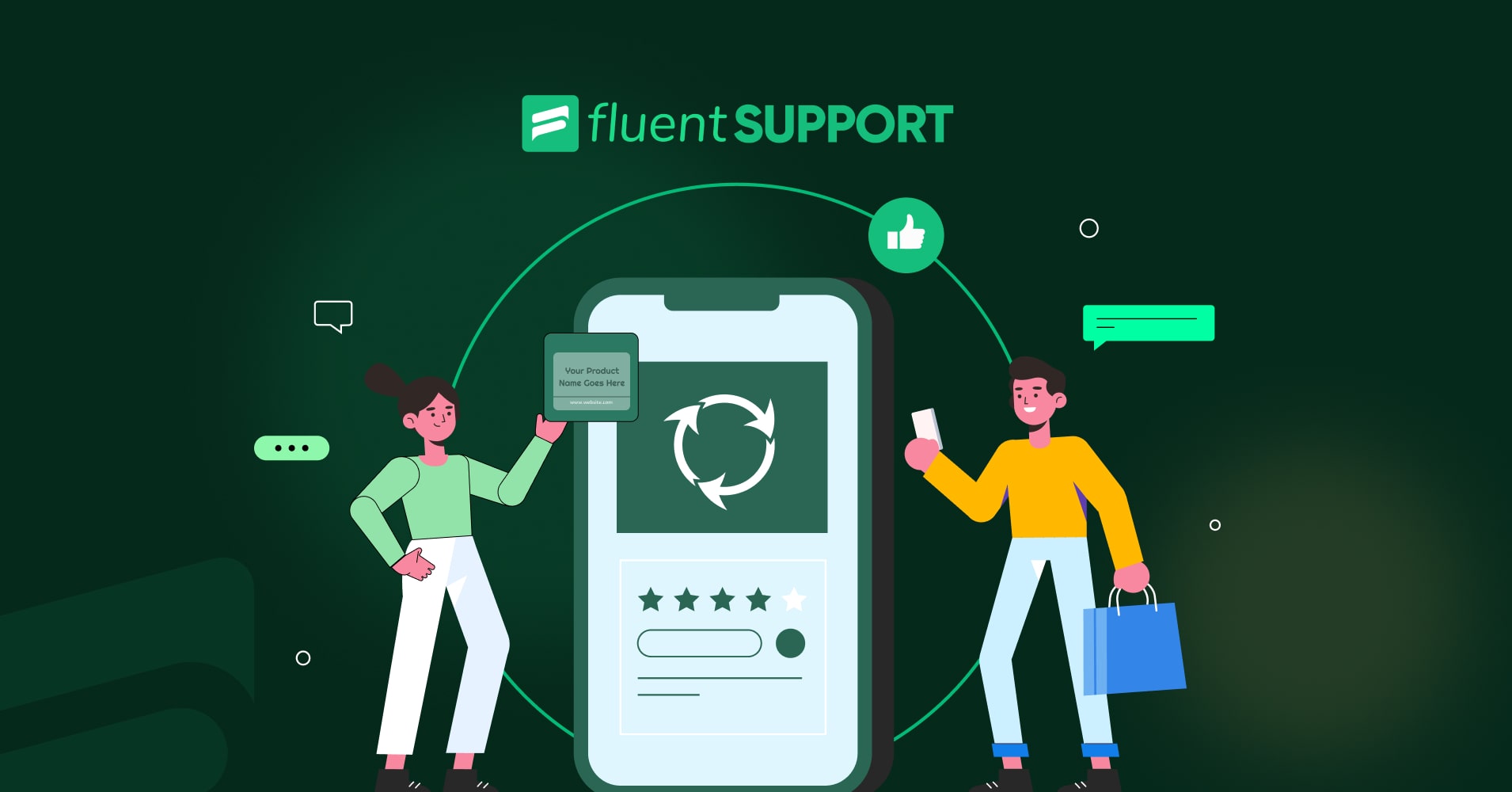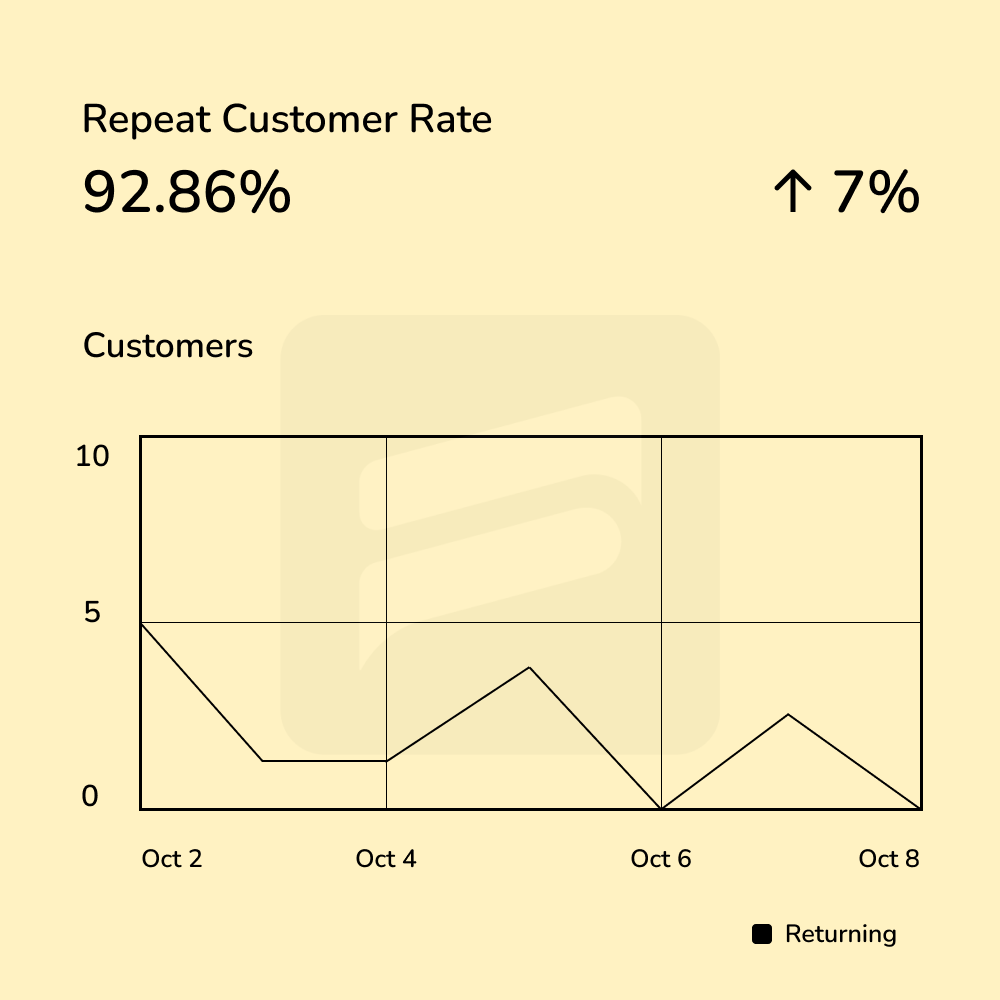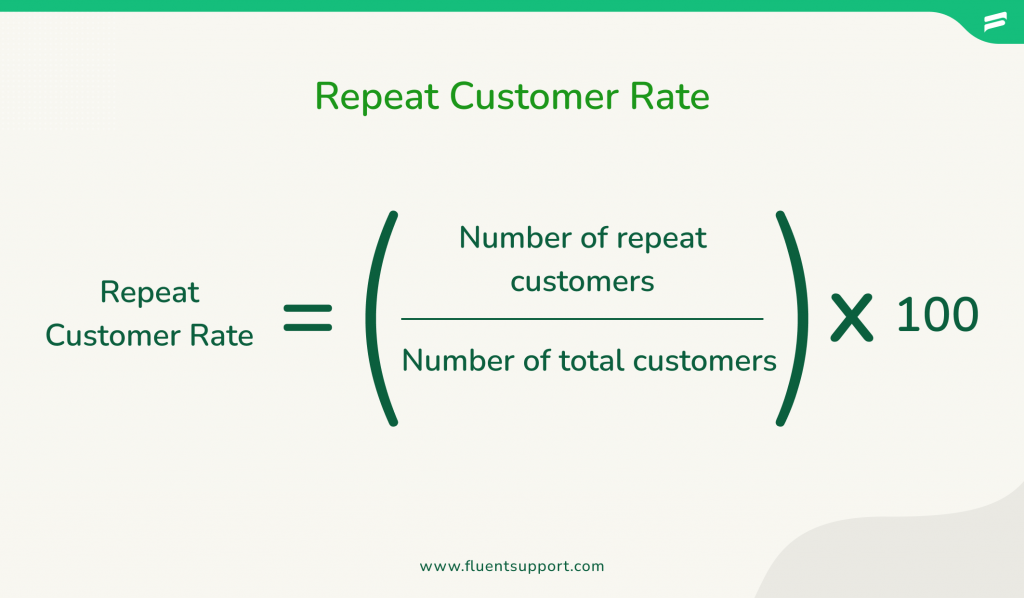
Repeat Customer Rate: Generate 3X More Revenue
By Uttam Kumar Dash
December 17, 2023
Last Modified: March 27, 2024
Did you know? “Selling to existing or repeat customers has a 60%-70% probability of making a purchase, surpassing the 5-20% chance with new prospects.”
Hence, we can increase revenue significantly by attracting more repeat customers and retaining the existing ones. But, to achieve this, we first need to measure a metric, Repeat Customer Rate (RCR).
Let’s take a quick dive into it, and find out how we can generate 3x more revenue by utilizing this crucial KPI.
What is Repeat Customer Rate (RCR)?
Repeat Customer Rate or RCR is a metric that measures how often customers return to make additional purchases or transactions.
A strong RCR boosts a Customer’s Lifetime Value, showing ongoing engagement and loyalty. Conversely, a low repeat rate may mean relying too much on new customers. This hints at potential gaps in retaining customers.

So, the metric isn’t just about a second purchase. It is a measure of ongoing customer experience across transactions.
Note: This is also commonly searched by the names of Repeat Purchase Rate, Repeat Customer, RCR, Returning Customer Rate, etc.
Difference between Repeat Customer Rate (RCR) and Customer Retention Rate (CRR)
Although, Repeat Customer Rate (RCR) and Customer Retention Rate (CRR) offer some insights into customer behavior. But they offer slightly different things from each other.
Customer Retention Rate (a KPI) measures a business’s ability to keep customers coming back.
Here are some basic differences between RCR and CRR:
| Repeat Customer Rate | Customer Retention Rate |
| Tracks how often customers return for more purchases. | Measures overall customer retention over time. |
| Calculates the percentage making multiple purchases in a specific time. | Calculates the percentage retained within a set timeframe. |
| Quick view of repeat business. | Includes both new and existing customers. |
How to calculate Repeat Customer Rate (RCR)

Every business’s customers fall into two categories: New Customers and Repeat Customers. And, this KPI reveals the percentage of customers returning to your shop or business for more shopping.
The formula for calculating Repeat Customer Rate is,
RCR = (Total Repeat Customers ÷ Total Paying Customers) × 100
Here’s an example: Suppose you have 30 customers who made a repeat purchase out of a total of 60. And, here’s how you can calculate it:
= (60 ÷ 30) × 100
= 50%
So, your RCR is 50% and that’s a good one.
What is a good Repeat Customer Rate?
“If you can get 20-30% of customers coming back every month and making a purchase from your store, you should do pretty well.”
Alex Schultz, VP of Growth at Facebook
Though, it is hard to define a good RCR, most eCommerce businesses aim for 25-30% returning customers. And, if you can hit around 50%, it may encourage more marketing for expansion.
But, in our opinion, less than 25% return customers signals missed revenue opportunities. It necessitates targeted efforts to encourage repeat purchases.
Note: Choose your RCR calculation period wisely. It depends on your goals. Opt for a short span like a month for quick insights. Also, you can pick a longer timeframe, say a year for a comprehensive view. So, decide based on your objectives.
Advantages and limitations of Repeat Customer Rate (RCR)
While RCR offers valuable insights into customer loyalty and purchase behaviors. Yet, it’s equally crucial to recognize its limitations.
| Advantages | Limitations |
|---|---|
| Returning customers are more likely to convert than new ones. | Less relevance depending on the products your store sells. |
| Acquiring repeat purchases is generally cheaper. | Decrease in RCR may not be negative if offset by new customer growth. |
| Repeat customers tend to spend more. | Context is essential; the metric should be considered alongside other business factors. |
| Loyal customers provide valuable word-of-mouth advertising. | Declining RCR may be a symptom of issues in customer satisfaction. |
| RCR is more actionable and effective than other metrics. | Crucial to interpret changes in the rate in the context of broader business strategies. |
| Offers a broad gauge of overall customer experience. |
3 strategies to 3X your Repeat Customer Rate (RCR)
To 3X your Repeat Customer Rate, you can consider implementing these strategies aligned with your business capabilities:
1. Execute lead nurturing Email campaigns
87% of brands say that email marketing is very critical to business success.
Litmus
Lead nurturing through emails is cultivating potential buyers by anticipating their needs. It is a key strategy for building relationships and boosting the Repeat Customer Rate.
- Provide valuable, concise content.
- Address one relevant topic per email.
- Personalize content to the lead.
- Plan email progression for sales funnel guidance.
- Test and track metrics for success.
- Keep emails short, personalized, and brand-consistent.
- Clarify the purpose of each email.
- Personalize greetings.
- Address pain points.
- Include testimonials.
- Share valuable information.
- Use a clear call to action.
- Allow unsubscribes.
- Follow up to refine the lead nurturing strategy.
2. Initiate loyalty programs
Over 83% of consumers say belonging to a loyalty program influences their decision to buy again from a brand.
Yotpo
Loyalty programs are initiatives sponsored by businesses. These programs offer rewards and incentives to foster repeat business through store/brand loyalty.
Even with a tight budget, implementing an enticing loyalty program can increase your RCR. Some popular loyalty programs for businesses are,
- Loyalty discounts
- Points systems
- Partner programs
- Referral programs
- Community programs
- VIP memberships
and so on.
Here are a few things you can keep in mind to create a loyalty program:
- Select an engaging name for your loyalty program.
- Connect with your product’s “why”.
- Clearly define loyalty points value.
- Structure non-monetary benefits around values.
- Actively promote the program using social media and Google ads.
- Consider co-branding with other businesses for compelling offers.
- Introduce a game-like element.
3. Run paid ads
75% of people say paid ads make it easier to find the information they are searching for.
Clutch
Targeted ads mean strategically placing advertisements to reach interested consumers for a more effective campaign efficiently. To utilize targeted ads for better RCR involves a lot of things. Consider these key strategies to optimize your ads:
- Analyze customer history, preferences, and behavior.
- Tailor ads to match individual needs and interests.
- Craft compelling & SEO-optimized headlines and calls to action.
- Use consistent, high-quality visuals reflecting brand identity.
- Enhance interaction with dynamic features like animations or carousels.
Additional tips improve the overall post-purchase experience for Repeat Customer Rate
53% say that the post-purchase is the most emotional part of their shopping journey.
ParcelLab
Post-purchase experience is the ongoing customer treatment after making a purchase.
So far we’ve talked about lead email nurturing, loyalty programs, and paid ads. Here are some additional tips to optimize every aspect for the ultimate boost in your RCR.
- Create a memorable unboxing or onboarding experience for customers.
- Express gratitude with personalized thank-you messages.
- Share tips to help customers maintain and optimize the performance of their purchases.
- Communicate and implement a transparent refund policy.
- Provide comprehensive product information and usage guides.
- Actively seek and utilize customer feedback on Support or through feedback forms for future improvements.
- Suggest complementary or additional products to enhance the experience. (Cross-selling & Upselling)
- Offer limited-time or early access to other products to familiarize customers with your range.
- Give exclusive or surprise discounts with coupon codes for future purchases.
- Recognize and celebrate customer milestones with rewards, such as birthdays or anniversaries.
- Collect and showcase customer reviews for social proof.
- Re-engage inactive customers with reminders, updates, or testimonials.
- Give exclusive membership offers showcasing its long-term benefits.
- Offer multi-channel customer support for flexibility and convenience.
- Make sure to respond to customer queries timely and courteously.
Powered by Fluent Forms
Try a helpdesk for increased Repeat Customer success
Lastly, if you don’t already have a good helpdesk, consider getting one. This is to automate your post-purchasing processes. A good customer support system can save you a ton of time and effort by tracking transactions and managing marketing campaigns more efficiently.
If we implement the strategies discussed above, we will surely achieve great results.
Thank you for your time!












Leave a Reply